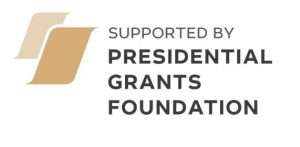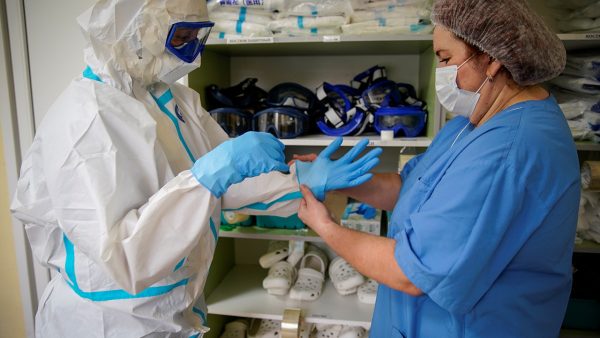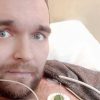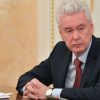 In Russia, on October 30, more than 18 thousand cases of coronavirus infection were identified. In the regions, doctors are overloaded. Patients wait a lot for an ambulance, there are queues in clinics, and there are not enough beds in hospitals: in Omsk, an ambulance brought severe patients to the local Ministry of Health, because no hospital could admit them. An infectious disease specialist at the COVID-19 hospital told Pravmir on the condition of anonymity why medicine cannot cope with the second wave and how unnecessary examination and treatment methods are connected with it.
In Russia, on October 30, more than 18 thousand cases of coronavirus infection were identified. In the regions, doctors are overloaded. Patients wait a lot for an ambulance, there are queues in clinics, and there are not enough beds in hospitals: in Omsk, an ambulance brought severe patients to the local Ministry of Health, because no hospital could admit them. An infectious disease specialist at the COVID-19 hospital told Pravmir on the condition of anonymity why medicine cannot cope with the second wave and how unnecessary examination and treatment methods are connected with it.
In the spring, in Russia, the situation with polymerase chain reaction (PCR) tests for coronavirus was bad. They were not produced in the volume that was required. It was then that the idea that computer tomography (CT) should be a mandatory stage of COVID-19 diagnosis appeared in our country.
People believed that the results would not be authentic without a CT scan. In part, there were reasons for this: without a CT scan, hospitals did not admit patients for treatment. Now, this idea has played a cruel joke on us.
Unnecessary CT scans
Today, our country has the world’s largest database of this examination: CT scans for lungs. As a result, we have a huge library, and these are not hollow words. At the same time, 70% of the performed CT scans were not necessary for patients at all.
In most regions of Russia, absolutely everyone with positive swabs go through CT. I was shown the following referrals for CT scans: “COVID-19 contact, no swabs were taken”, “Acute respiratory disease, saturation 99%, body temperature 36,9”. These people were referred for consultation in the admission room of the infectious diseases hospital! Yet, they simply needed to stay at home for 14 days. This wasted the time of ambulance crews, who at that time could provide assistance to severe patients, and loaded the tomograph with unnecessary examination.
Contact with a coronavirus patient is not an indication for a CT scan, and it is very strange that doctors and paramedics in clinics sometimes do not understand this.
It is because of the extra examination that tomographs are so loaded, which is why there are surreal queues for CT scans.
Reasonable clinic doctors say, “Let’s review the queue: if a person gets better after 3-4 days of waiting, maybe they do not need a CT scan anymore. They can stay at home”. But no one supports them.
Ambulances are overloaded with calls and transportation of people for CT scans, and sometimes the patients are clinically asymptomatic.
My friend works as a nurse at the therapeutic hospital. A coronavirus patient was brought there, it happens. Doctors took tests afterwards. My friend’s test came back positive. He had no symptoms at all. What is the smart thing to do here? Give the nurse a 14-day sick leave, send him into lockdown, and that is it. But instead, they give him a referral for tests and an absolutely unnecessary CT scan, and in order not to do that, he had to appeal to the clinic management.
…and the case when a CT scan is necessary
CT scans should be done for severe patients, when it is necessary to make a diagnosis and understand how a person can be helped. If a patient has a viral pneumonia, we go to the place where it is treated: there should be oxygen in the wards. If it is a bacterial pneumonia or any other disease, then a patient needs to go to the corresponding clinic. This is what a CT scan is for.
In Russia, the ninth version of the clinical recommendations for the prevention, diagnosis and treatment of a new coronavirus infection has been published. It says not to do CT scans on patients with mild or asymptomatic COVID-19. The doctor decides to conduct a radiological examination based on the clinical picture.
If the patient’s saturation has fallen below 90%, you need to understand, whether it is pulmonary artery thromboembolia, bacterial pneumonia, or actually COVID-19. To determine where to treat the patient, we take them to a CT scan. This examination should influence further clinical decisions.
Professor Igor Tyurin, the chief specialist in radiation and instrumental diagnostics of the Ministry of Health of the Russian Federation, said that there is no need to do computer tomography of lungs to diagnose coronavirus. According to him, CT scans are for patients with severe clinical symptoms of respiratory infection (labored breathing, high fever) and for patients who have signs of respiratory viral infection and have serious risk factors (severe diabetes, severe heart failure, severe overweight). I am very grateful to the distinguished professor Igor Tyupin for these words!
However, in some regions, the “treatment” of COVID-19 with a tomograph is still ongoing. It is people who are scared by the pandemic that demand to do it.
Unnecessary hospitalization and doctor house calls are another issue of the second wave.
Unnecessary treatment
Imagine that you have a common cold. You have a runny nose, not too high body temperature for 3-5 days and feel unwell. In this situation, you need only take antifebrile drugs and drink a lot of water. You have taken a sick leave remotely, recovered, and returned to work. Yet, doctors also come to such patients at home now.
Clinic therapists work until late at night: they have too many patients. Unfortunately, people, who simply have a runny nose, also call a doctor.
Patients who find it difficult to breathe room air, who have a high temperature for more than five days and have concomitant problems alongside the symptoms: oncopathology, diabetes, excess weight, must call the doctor. Everyone else could be issued a sick leave remotely, without the participation of the medical service.
At the same time, many people with severe symptoms wait a lot for help. They get worse, no one comes to them because the system is overloaded. It is basically full of “snot”.
When there was a flu epidemic in Norway a few years ago, there were hotlines. A patient could call a doctor, tell them about the symptoms, and the doctor decided whether the patient needed a face-to-face appointment or not. In the second case, a person got an electronic prescription over the Internet for drugs that acted on influenza A virus. People took medications and recovered. In the same country, as I know for sure, there have been no COVID-19 deaths since July 13, simply because the system is well-tuned.
In Russian regions, in the spring, patients with mild coronavirus got hospitalized at special COVID-19 units, although it happens now as well: my colleague from the region said that another specialized hospital has been opened there and got filled with mild and asymptomatic patients simply because they all live in a dorm and they had multiple contacts with each other. Doctors just decided to keep them in the observation facility and be done with it. All these people can and should be at home, there will not be enough financial resources for these unreasonable decisions.
Worry about relatives is also not a reason for hospitalization. People rant, “This man got sick, his wife and children live with him in a two-room apartment. Hospitalize him!” But the family already got infected. We do not know whether they will have the virus symptoms or not. Therefore, there is no epidemiological sense in isolating the patient, since they spread the infection a few days before the symptoms appear. This all is a gigantic and completely unnecessary work. And it does not bear fruit but requires a lot of effort from doctors and money from the government.
Ineffective drugs
In the clinical guidelines, there is a direct indication of how to treat COVID-19. So, if a patient has a mild virus form, they are prescribed two antiviral drugs, as well as an antimalarial one, which was proven to be ineffective in the summer.
I would be happy if patients were given medicine that would stop the course of mild infection, as, for example, there are really effective drugs for some types of flu. But there is not one yet!
The progressive medical community does not expect to have the magical pill in the near future.
I hope for a vaccine. Although it is still too early to draw conclusions about it: the third phase of clinical research is underway.
At the same time, people self-medicate. People publish surreal treatment regimens on the Internet: lists of drugs “for treating coronavirus”. It is too bad that they mention anticoagulants. Moreover, district doctors persistently prescribe them: for example, recently I had to explain to the relatives of an elderly patient with diabetes and two prior strokes, “Your mother must not take anticoagulants, she had the type of stroke, after which they are counter indicative, here are the instructions”.
The risk of taking anticoagulants is much greater than the benefit. They can cause bleedings. Self-administration of such drugs can simply kill the patient. There were such cases.
Another disaster is the absolutely unnecessary prescription of antibiotics to all patients with acute respiratory disease (let’s call a spade a spade: most patients have acute respiratory disease and nothing else). I am very afraid: consider those drugs that doctors prescribe to everyone as good as lost: people will develop resistance to bacteria, and they take them in vain. Professor Roman Kozlov, another chief unofficial specialist of the Ministry of Health of the Russian Federation on clinical microbiology and antimicrobial resistance, published an open letter “On the use of antibacterial drugs by patients with a new coronavirus infection COVID-19”. It lists the actual indications for prescribing antibiotics. Unfortunately, now they are often prescribed without any indications.
What can be changed?
Ambulances should come to really severe patients. There are a lot of them today. They wait for an ambulance at home: with labored breathing, high fever, and concomitant diseases. While someone is being taken for an unnecessary CT scan, these patients have to wait. I feel very sorry for these people.
Doctors should not prescribe antibiotics, anticoagulants, immunomodulators and all the piles of medication that poor patients receive if their disease is mild or asymptomatic.
Instead of going on calls, clinic therapists could make daily calls to patients, who are being treated at home. Ask them, “Are you alright? Can you breathe room air? What is your temperature? How many breaths do you take in a minute? Try to count” (If more than 20, you need to see a doctor. – Ed.).
Now we need to focus on helping those who really need it. This is a simple concept of sorting. Otherwise, we will simply run out of resources. And first of all, human resources. Doctors who work in the “red zone”, in ambulance, in clinics, are very tired.
Many of them say they no longer need any COVID-19 payments. They want to go back to the life they had before the pandemic.
Everyone wants it. However, we have no choice. “The scary thing is not that we are adults, but that adults are us”.
Translated by Julia Frolova

















